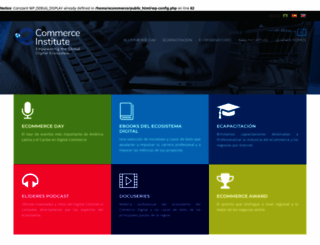eCommerce Institute | Empowering the Global Digital Ecosystem
Page Load Speed
16.5 sec in total
First Response
179 ms
Resources Loaded
16.3 sec
Page Rendered
61 ms

About Website
Click here to check amazing ECommerce content for Colombia. Otherwise, check out these important facts you probably never knew about ecommerce.institute
Organización sin fines de lucro que promueve el eCommerce y los Negocios por Internet.
Visit ecommerce.instituteKey Findings
We analyzed Ecommerce.institute page load time and found that the first response time was 179 ms and then it took 16.3 sec to load all DOM resources and completely render a web page. This is a poor result, as 95% of websites can load faster.